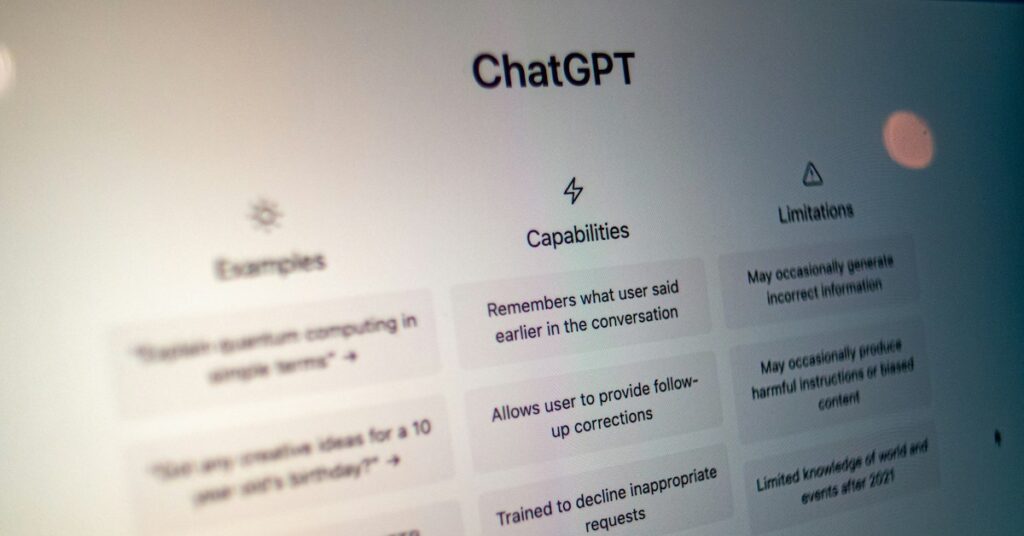
MAICON 2023: Not Just Another AI Conference
By Sara Meier
August 31, 2023
It’s been about a month since MAICON 2023 in Cleveland and we have finally emerged from the post-conference haze. Attending topic-based marketing conferences can usually go one of two ways; either you leave with a sense that you’re doing everything right and you feel like you didn’t hear anything new that you didn’t already know, or you leave feeling how our VP of Content, Sara Meier, felt after MAICON.
Here’s what she had to say in the weeks following.
This conference was highly educational, thought-provoking, actionable, and powerful. The sessions that the AI Institute offered were more than just sponsored presentations on tools that salespeople peddled – these sessions presented real case studies, wins, challenges, and discussions on the topic of AI in the world of marketing, straight from the mouths of the innovators on the cutting edge of this technology.
In this recap we’ll cover the following:
- MAICON 2023 Overview & Takeaways
- Most Impactful Sessions
- Next Actions for Agencies
MAICON 2023 Overview & Takeaways
The first day of the conference was kicked off by Paul Roetzer, Founder & CEO of The Marketing AI Institute, with a session titled The State of AI for Marketing & Business. His message was essentially that we all have the opportunity to lead and bring ideas to the table of how to use AI beyond just content and tools. Based on businesses surveyed, Paul mentioned that 29% of businesses have already infused AI into daily workflow, 18% are using it periodically, and 45% of businesses are at least experimenting with AI. By now, this data is over a month old so we can assume adoption has only grown. Paul continued to illustrate the adoption of AI by pointing to the investment Big Tech is making in tool creation. Microsoft 365’s product, Copilot, which will be hitting the market in 2024, is a great example of this type of technology that will completely transform how people in business will utilize AI technology on a daily basis.
With this widespread adoption and interest in AI spreading like wildfire, marketers are left wondering where to invest their time, money, and focus. Based on conversations, it’s clear that the value gained from AI will be unevenly distributed, with tool costs high, apprehension around adoption in specific businesses will grow, and limitations across certain industries (e.g.: healthcare) will remain a challenge.
So, again – where do we begin? The short answer to this question is to start at the top. Build an AI council, develop your own principles and policies for AI (these will continue to evolve), and develop a roadmap as an organization where you can implement AI to work smarter, not harder. AI cannot just be adopted by content teams, it must be looked at as a tenet of how organizations do business as a whole. Paul said it best, that there are change agents emerging from everywhere – individual contributors, CMOs, etc. Don’t be afraid of AI ruining creativity. In fact, we’re in the renaissance of human creativity. We have an opportunity to create more value around art and human stories, and if used correctly, AI can give us the greatest gift – more time.
Most Impactful Sessions
The Marketing Singularity: Large Language Models and the End of Marketing as We Know It
Christopher S. Penn, Co-Founder & Chief Data Scientist, TrustInsights.ai
Takeaways
- The principle components each prompt should include for maximum effectiveness for large language models (LLMs) include: Role, Action, Context, Execute, or RACE.
- Role – the statement to set guardrails for the rest of the prompt, should be specific and keyword-focused to set appropriate parameters
- Action – the directive for what you want the LLM to do
- Context – an optional component that provides background information to aid in the refinement and specificity of details
- Execute – instructions for longer prompts reminding the model what it’s supposed to do from a formatting and summarization perspective
- Best use cases for AI tools for content generation include:
- Extraction – pulling insights out of large-scale data sets or key points from transcripts from meetings
- Summarization – shrinking down large sets of content to review sentiment or feedback points (this is also a great way to quickly generate powerful social media posts)
- Rewriting content – whether regenerating local SEO content or converting casual communication into a formalized business email
- Should you use AI or not?
- Commoditized content like the examples above can easily be made more scalable with the help of AI
- Creative or comparative content that is meant to be unique and referential to the human experience should still be human-generated
- Risks of using AI that marketers need to be aware of:
- Positive/negative sentiment and bias can be pulled in from anywhere LLMs can touch (aka the whole internet, including websites we would probably not want to emulate like hate groups, politically leaning organizations etc.)
- Model poisoning is also a real risk, with free, open model tools being controlled by whoever is creating them, meaning certain messaging and responses can be restricted.
- AI-generated content is ineligible for copyright, as only humans are eligible to file for copyrights and you could potentially be hit with a copyright violation as LLMs due to pull from copyrighted content.
- Open source systems are… open. This means that sensitive data like PHI is not safe to share with an LLM, because once it’s out there, it’s out there. You must use a local source AI tool if you’re handling PHI.
Demystifying AI Tools – Tips & Tricks
Erica Salm Rench, COO, Rasa.io
Takeaways
- Most businesses’ ideal state will be to be in a 50/50 Marketer-to-Machine Scale (according to The Marketing AI Institute), in which systems can manage most aspects of tasks, but still require inputs and oversight from humans.
- There are tons of tools that can scale manual daily tasks, and improve meeting productivity, social media management, and email communication.
- Here are a few of the tools that were new to me, and have proven to be very powerful for agencies and marketing teams thus far:
- Descript – an AI tool that can deep fake your own voice, digest an audio transcript, and type in the edits to remove “likes” and “uhms’ ‘ for podcasts and type in words you’ve missed as well.
- Flowrite – a personal email tool that can help compose emails and assist with ticketing, sales, and streamlining quicker responses.
- AdCreative.ai – a tool that helps create multiple iterations of ad imagery and copy to test different fonts, images, colors, etc. to use for A/B testing of campaigns both for paid social and organic social media use.
Maintain Your Brand Voice Through AI Personalization & Storytelling
Carol Cox, Founder & CEO, Speaking Your Brand
Takeaways
- ChatGPT is a tool everyone now has access to, so content generated using that tool will eventually lead to all content and marketing sounding the same. This generic internet voice created by LLMs will limit brands’ voices.
- The key to producing a defined brand voice is to follow Cox’s “Brand Voice Canvas” by diving into the brand’s mission, expertise, methodology, and most importantly, experiences.
- You can ask ChatGPT to write in your voice and style, but without context, the tool cannot understand your writing style, which is why developing custom plugins is imperative to produce fine-tuned content using ChatGPT.
- Cox and her engineering team have developed a vector database of all her content (podcasts, blogs, articles etc.) to query all content every time she prompts her custom ChatGPT plugins which allows the output to truly emulate her voice, speech patterns etc.
- Human experiences in storytelling are the key to unique messaging. By incorporating personal stories, imagery, dialogue, emotion, action, and lessons, your content can tell stories and truly convert users.
Inside the C-Suite: CMO Perspectives on the Opportunities and Obstacles of AI Adoption
Lisa Ames, Helen Baptist, Matt Heinz, and Amanda Todorovich
Takeaways
- Amanda Todorovich, CMO of Cleveland Clinic, brought a lot to the table and it was really empowering to hear how AI has positively impacted their organization, despite limitations in the healthcare industry.
- Amanda leads a large content and SEO team that will only continue to grow and take on more with the help of AI – it’s not fueling fear, but rather greater adoption!
- Amanda did mention that the immediate reaction was fear for writers, but positioning AI as a tool to enhance, not replace, their work has helped.
- All three of the women on this panel (also, how cool to see so many strong, empowered female leaders represented!) were asked if they plan to decrease staff due to AI, but studies show that 81% of leaders don’t plan on decreasing staff due to AI. In fact, 22% plan to increase staff to help with AI over the next year.
- All panelists recommended looking into piloting and then scaling AI-backed projects that solve very specific problems. (e.g.: delays in the physician review process for content)
- Establishing an AI policy centered around ethics is especially important in highly regulated industries. Just because you CAN do something, doesn’t mean you SHOULD do something.
Forecasting the Future Marketing Org Chart & Team
Dan Slagen, CMO, Tomorrow.io
Takeaways
- This session was all about how Dan restructured his marketing team with AI in mind, and this is a topic on the minds of the leadership teams at every single organization.
- There has been a lot of turbulence in marketing teams in the last 3 years between the pandemic, the recession, the banking crisis, and hiring freezes – so if your teams have seen a lot of fluctuation and team changes, you are not alone.
- Tomorrow.io has accomplished a truly incredible amount of marketing success in the last year with a small, but mighty team that was made even more powerful by hiring an AI Marketing Specialist to lead and integrate AI tools and implementation across the organization.
- Dan pointed to a few different routes you can take to structuring your teams with AI in mind, for example with nucleus teams, departments built around marketing, engineering, and product, reporting up into AI Management with expansion teams under the departments, or with nucleus teams built around goals like lead generation acceleration, efficiency improvement and cost reduction.
- Businesses that are rethinking areas of ownership and couple/mix and match tools and goals under different departments will see the best adoption and outcomes through implementing AI at a leadership level.
- Tips for safeguarding your team with these shifts:
- Talk and prioritize your efforts through ideation and implementation
- Leave room to pivot, don’t sign for long contract terms into AI tools
- Rent, don’t own, tech stack tools as these will continue to evolve
- Keep company vision and goals at the forefront of your decision-making and be transparent about these decisions
- Focus also on ROT (return on time) – this should be your team goal
Next Actions for Agencies
Now we get to the fun part, how do you implement the tools MAICON taught us about and pave the way towards greater adoption of AI in your organization? As mentioned before, this should start at the top down. Getting buy-in can be tough, but if your organization’s leadership understands the value of AI, they’ll be willing to invest in technology and be open to new ways of thinking about products, GTM strategies and much, much more. So, step one will be presenting opportunities and the value of AI to leadership and getting them to think about what you stand to lose by ignoring this technology.
Once you have leadership buy-in, you can bring together a task force of individuals from different departments and career levels to align on your AI policy, priorities and action plan. At the department-level, you can then develop a testing plan to pilot AI tools you think may help you gain efficiency or even open up doors to new service offerings. Remember, the key is not to go all in on any one technology right away. AI tool testing should be like speed dating, seeing which platforms fit best with your proprietary tools and offerings. Not everything will be a perfect match and just because it worked for another agency, doesn’t mean it will work for you! So have fun, date around, and you’ll be sure to find a tool set that you (and your teams) love.
The last step? Keep iterating. AI will be a completely different landscape this time next year, which means that the processes and platforms we are getting used to today will likely be old news by 2024. In summary, this is an exciting time to be in marketing. Stay engaged with organizations like The Marketing AI Institute all year long to stay on top of AI trends, and next year, you should definitely attend MAICON 2024.


